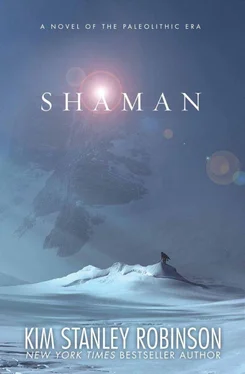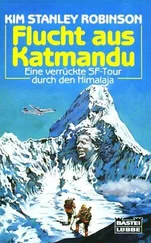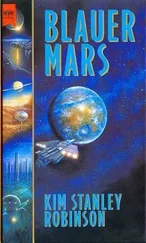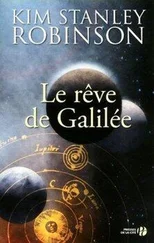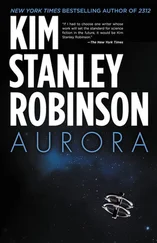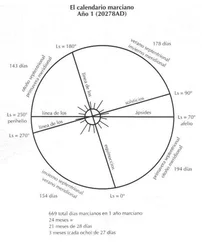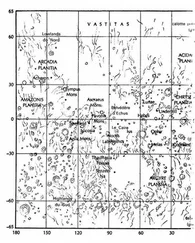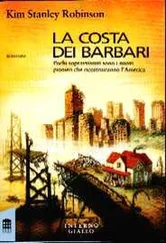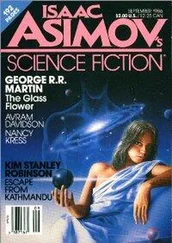Kim Robinson - Shaman
Здесь есть возможность читать онлайн «Kim Robinson - Shaman» весь текст электронной книги совершенно бесплатно (целиком полную версию без сокращений). В некоторых случаях можно слушать аудио, скачать через торрент в формате fb2 и присутствует краткое содержание. Город: New York, Год выпуска: 2013, ISBN: 2013, Издательство: Orbit, Жанр: Фантастика и фэнтези, Историческая проза, на английском языке. Описание произведения, (предисловие) а так же отзывы посетителей доступны на портале библиотеки ЛибКат.
- Название:Shaman
- Автор:
- Издательство:Orbit
- Жанр:
- Год:2013
- Город:New York
- ISBN:9780316235570
- Рейтинг книги:4 / 5. Голосов: 1
-
Избранное:Добавить в избранное
- Отзывы:
-
Ваша оценка:
- 80
- 1
- 2
- 3
- 4
- 5
Shaman: краткое содержание, описание и аннотация
Предлагаем к чтению аннотацию, описание, краткое содержание или предисловие (зависит от того, что написал сам автор книги «Shaman»). Если вы не нашли необходимую информацию о книге — напишите в комментариях, мы постараемся отыскать её.
From the New York Times bestselling author of the Mars trilogy and 2312 comes a powerful, thrilling and heart-breaking story of one young man's journey into adulthood -- and an awe-inspiring vision of how we lived thirty thousand years ago.
Shaman — читать онлайн бесплатно полную книгу (весь текст) целиком
Ниже представлен текст книги, разбитый по страницам. Система сохранения места последней прочитанной страницы, позволяет с удобством читать онлайн бесплатно книгу «Shaman», без необходимости каждый раз заново искать на чём Вы остановились. Поставьте закладку, и сможете в любой момент перейти на страницу, на которой закончили чтение.
Интервал:
Закладка:
And no way to fix it. If he continued with this new head in this position, the four heads would be too close together: but the space wasn’t big enough for five heads.
Startled still, sick with frustration, he stepped back again, careful this time not to go near the lamps. He sat down next to his sack and looked at the wall and thought it over. He recalled Thorn’s bison in the farther chamber; one of them had seven legs to show it was running. He saw again against his eyelids the black horse on the ridge, rearing and throwing his head toward the sun. The way the light had caught on his stiff short black mane. The way black horses seemed to jump out of a landscape into the eye.
He stood again and went and touched the wall under the mane. He could leave that mane detached and on its own, and place the second head a bit farther down. It might look like there was an extra horse in between the two, as often happened when one looked across a herd. Or it might suggest the horse’s rearing, like the seven legs of Thorn’s bison. The world seen by lightning flash, as Loon often saw it, storm or not. Moments of being one after the next, snapping in the eye once and then forever.
The wall was cold under his fingertips. His feet were cold, and he flexed up and down on his toes and heels, trying to warm them. The wall pulsed out toward him, then sucked back away from him, trying to pull him off balance, cause him to fall into it and be captured. There were smaller horses in the valleys to the west, their women had no manes. He saw he could make a little joke; the four heads of the rearing horse would also be from four different horses. And the detached mane could also be smudged in a way that made it look like the top horse’s cheek, while remaining the mane of the horse under it. Then a maneless horse, with little ears on top: a colt, or almost. So in a single toss of the head the horse would age through its whole life, or rather become all the black horses Loon had ever seen. Well, the story it told was not his problem. He just needed to draw them, and after that they would tell their own story. He wouldn’t be sure what he would get until he drew it.
The curves of the wall under his fingers showed him that the second head was looking less into the wall than the top one had been. Part of the toss of the head. Rearing away, defiant. The back line of the blackest bull, to the left of the horses, was a faint line between the two horses’ faces, making a triangle. He took up the burin and scraped that triangle a little whiter, working as carefully as he could in the corners where the lines met. The rock-on-rock scrape rasped into the black shadows of the cave. A big black nostril. The sound of the stick against the wall was so much woodier than the burin.
Loon stood back to see how the second head looked. It seemed to be sniffing the drawing of a little old rhino, standing on end. His third horse would be sniffing this same rhino’s rear. That would not make the horse happy, it would keep its mouth and nostrils shut to avoid the smell of that rhino’s rear. Horses and rhinos definitely did not like each other. Really no animal was happy to be around a rhino. Only mammoths would even come near one. Mammoths did not care who they approached, although they did take care around rhinos. It was a standoff between them when they both wanted the same water. Once Loon had seen a rhino and mammoth stand watching each other across a creek for an entire fist of the day without moving, each not quite looking at the other, both seeing who would wait the longest. Loon had left before they decided it.
He made the third head a woman horse, with a very short mane, neat and demure. Coloration a lighter black, achieved by a close mottle of wall and charcoal, requiring a very light touch with the end of the branch, and some finger smudging, very light. The wall here was slightly chipped, which made it perfect for this effect; black on the high points, dimples white. Each horse was going to be a slightly different black.
The fourth head, at the bottom, he decided would be the blackest black of all, something to really draw the eye, to start the viewer at the beginning of the tossing of the head. One would look first at this bossy mass of black, then the eye would move up with the motion of the rearing. The heads would move and lie still both at once. The Thorn touch, yes, of course; Thorn would have liked this painting. So, one of the smaller kinds of horse to start things. A young stallion, black as the cave when the lamps went out, and whinnying. This noisy black creature would be the start of it all: a horse startled, his eye round, scraped white around it, a white tear streak under the eye, also scraped. Mouth open as it whinnied in protest at being seen, then reared and wheeled away, as it had done on the ridge, in that moment when some part of Loon had been born, his wander’s great moment, when he had realized the world was stuffed with a meaning he couldn’t express. Right here he would express what could not be expressed, for all to see.
He filled in the black. He scraped with the charcoal stick, fingered the soot into the rock. His fingers were pure black now too, and as he rubbed the charcoal in, there were times when he felt and saw his fingers go right into the rock, right into the horse’s body. Bristles of the mane as stiff as lion whiskers, bunched and upright. Black the whole head, all except a little stretch where neck met chest, just to round the figure, give it the curve that the wall itself gave the horse, a little curve of a bump so that the horse’s left leg stood out from the wall. This would be a great touch when he brought the pack in to see it, and moved the lamp to make shadows on the wall dance. He couldn’t both move the lamp next to the wall and see its effect from the center of the cave, but he could tell it would be good, a real movement. And above it the horse would toss its head.
Now his hands plunged deep into the stone of the wall. He had to move them around slowly, as if in thick mud, to keep from breaking off his fingers. The wall was cold, his fingers were cold.
When he was done with that blacking, the blackest blacking he had ever done, it took him a while to pull his hands out of the wall. When he did, he stepped back to his sack to look at the wall.
It was good. The free-standing mane between the top two heads was still strange, but there was nothing he could do about it. It worked as the cheek of the top horse, or the top of a horse seen between the upper two, or the mane of the second horse, rising before its head did, leading the head. All of those, sure. Part of the movement. And the black of it was good. Loon loved the black of the lowest horse, whose whinny seemed to echo in the dark reaches of the cave, the black spaces that the lamps did not light.
He went back to the wall with the burin, and began to scrape the area around the lowest head, to make its outline that much sharper. The mouth inside the whinny had to be as white as the woman’s kolby, there under the bison man looking across the chamber at him. Scrape it clean. Get it just right. The stone had such a texture here, granular but smooth; he could scrape it very clean, get a smooth white surface to delineate the black mass of the horse. Ah, watch out, a scrape too far down—pick up the charcoal stick, wet the finger, cover the scrape mark. The lower line of the jaw had just the jowl of that horse on the ridge, two little indentations marking it.
There was a burbling moan from below, and then a gust of wind, and all his lamps went out at once, leaving him in pure blackness, a black as black as if the lowest horse head had spilled out and poured over him and filled the whole cave.
Chapter 66
This was bad. The blackness was absolute. He could make colors appear in his eyes by squeezing them shut, but there was no point to that. He had no sight. The world was black.
Читать дальшеИнтервал:
Закладка:
Похожие книги на «Shaman»
Представляем Вашему вниманию похожие книги на «Shaman» списком для выбора. Мы отобрали схожую по названию и смыслу литературу в надежде предоставить читателям больше вариантов отыскать новые, интересные, ещё непрочитанные произведения.
Обсуждение, отзывы о книге «Shaman» и просто собственные мнения читателей. Оставьте ваши комментарии, напишите, что Вы думаете о произведении, его смысле или главных героях. Укажите что конкретно понравилось, а что нет, и почему Вы так считаете.
